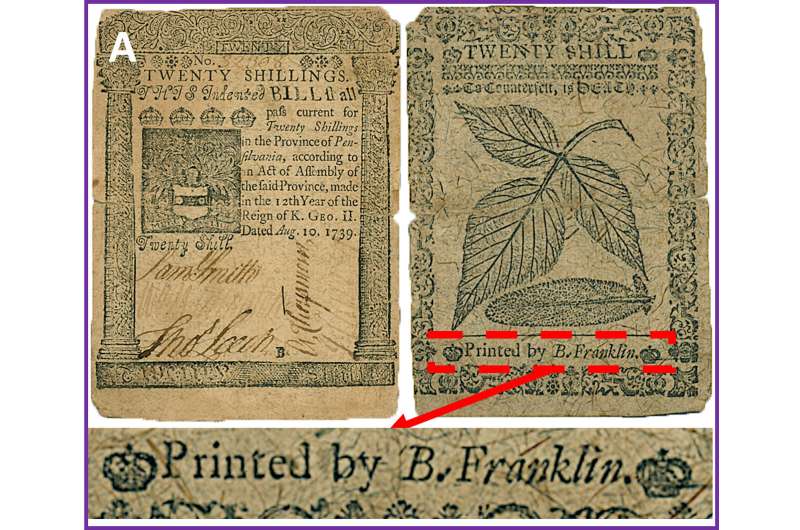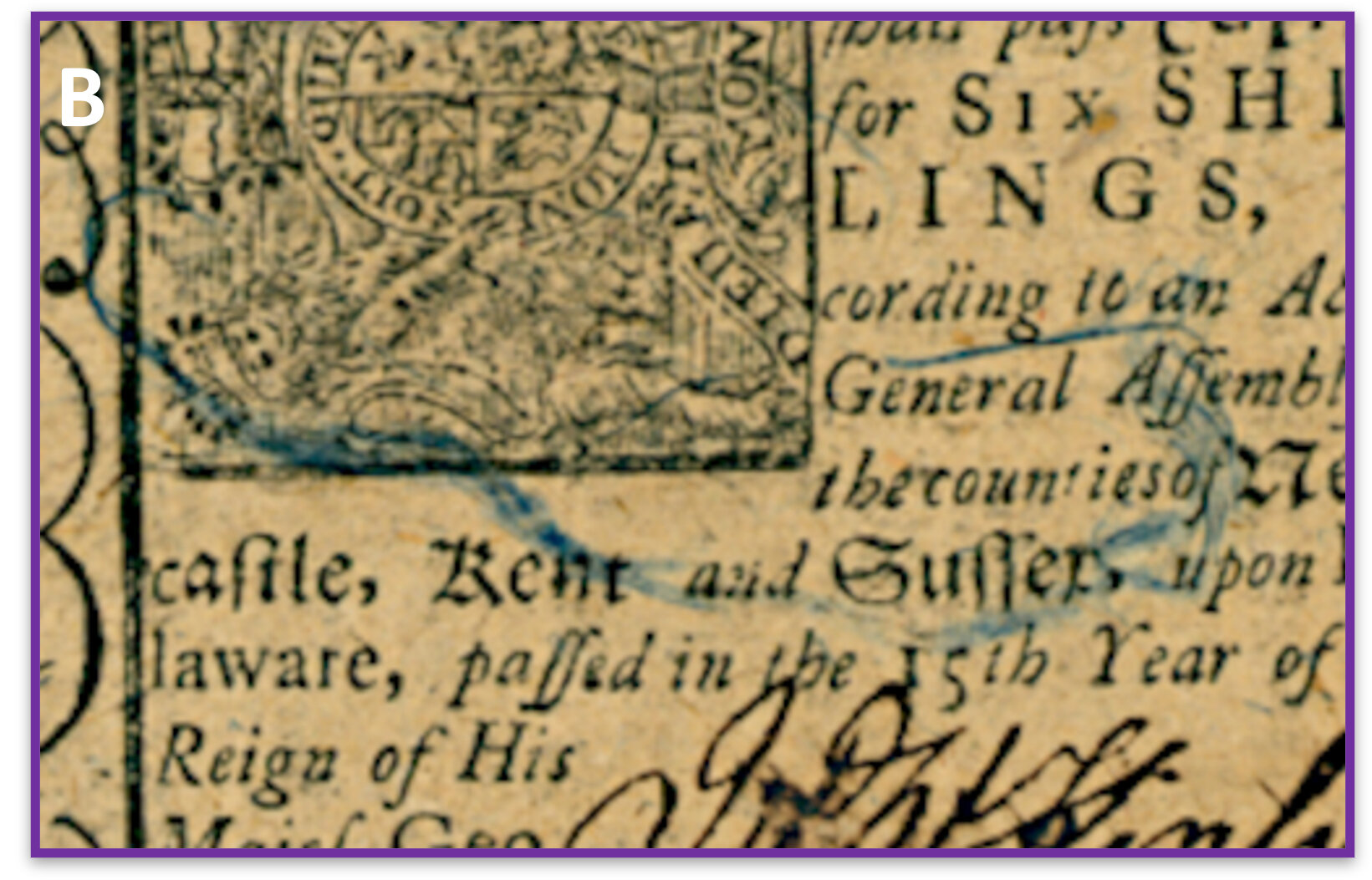Benjamin Franklin was a polymath, with inventions, publications, scientific research, diplomacy, and his role as a founding father of the United States among his many accomplishments. One often overlooked contribution was his work in printing colonial paper currency, where he employed innovative techniques to combat counterfeiting threats.
Franklin utilized colored threads, watermarks, and imprints of natural objects like leaves to make replication of his paper bills incredibly difficult. A team of researchers from the University of Notre Dame has recently shed new light on these methods through advanced scanning techniques. This research not only provides a clearer understanding of Franklin’s techniques, but also highlights why he is honored on the $100 bill.
The findings, published in the Proceedings of the National Academy of Sciences, detail the use of spectroscopy, fluorescence tests, and electron microscopy to identify the materials used by Franklin and his network of printers. These materials set his bills apart from counterfeit copies, featuring watermarks, indigo-dyed threads, and “nature printing” techniques that captured the intricate vein patterns of leaves.
Lead author Khachatur Manukyan, an associate professor of physics at Notre Dame, explained that their goal was to decode the materials used by Franklin and uncover any differences between his bills and others. The research revealed Franklin’s fillers and dyed threads, which made the bills more durable and difficult to counterfeit.
Franklin even developed his own graphite-based ink, distinct from the boneblack-based inks used by other printers at the time. The significance of Franklin’s ink requires further study.
Interestingly, the surge of counterfeiting during the Revolutionary War led the U.S. government to favor coinage over paper bills for several decades. It was not until the onset of the Civil War in 1861 that the printing of dollar bills, known as “greenbacks,” was authorized. These bills also incorporated colored threads as a security feature, a design element that persists in modern U.S. currency.
The research conducted by the Notre Dame team provides valuable insights into Benjamin Franklin’s contributions to combating counterfeiting and laying the groundwork for the U.S. dollar. His innovative techniques and attention to detail continue to influence currency design and security measures today.

Franklin’s techniques created formidable barriers for counterfeiters. By incorporating specialized materials like fillers and dyed threads, his bills were more durable and resistant to replication. Furthermore, his nature-printed patterns, which captured the intricate details of leaves, posed a significant challenge for less skilled printers.
Additionally, Franklin’s use of graphite-based ink, in contrast to his contemporaries’ boneblack-based inks, added another layer of distinctiveness to his bills. However, the exact significance of Franklin’s choice of ink remains an area of further study.
The research conducted by the Notre Dame team emphasizes the lasting impact of Benjamin Franklin’s innovations in American paper money. His techniques and attention to detail served as the foundation for modern currency design, including security features like the embedded “security thread” found in today’s U.S. currency.
It is clear that Franklin’s ingenuity and dedication to combating counterfeiting have left a lasting legacy on the U.S. dollar. His contributions continue to shape the world of currency and inspire ongoing advancements in security measures.
More information:
Manukyan, Khachatur, Multiscale analysis of Benjamin Franklin’s innovations in American paper money, Proceedings of the National Academy of Sciences (2023). DOI: 10.1073/pnas.2301856120. doi.org/10.1073/pnas.2301856120
Citation:
How Benjamin Franklin laid groundwork for the US dollar by foiling early counterfeiters (2023, July 22)
retrieved 22 July 2023
from https://phys.org/news/2023-07-benjamin-franklin-laid-groundwork-dollar.html
This document is subject to copyright. Apart from any fair dealing for the purpose of private study or research, no
part may be reproduced without the written permission. The content is provided for information purposes only.
Denial of responsibility! TechCodex is an automatic aggregator of the all world’s media. In each content, the hyperlink to the primary source is specified. All trademarks belong to their rightful owners, and all materials to their authors. For any complaint, please reach us at – [email protected]. We will take necessary action within 24 hours.

Jessica Irvine is a tech enthusiast specializing in gadgets. From smart home devices to cutting-edge electronics, Jessica explores the world of consumer tech, offering readers comprehensive reviews, hands-on experiences, and expert insights into the coolest and most innovative gadgets on the market.


